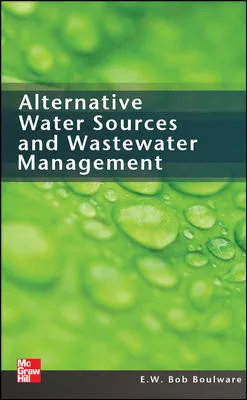2006 Clean Water Report
Your Drinking Water's Report Card

Consumers who obtain drinking water from a municipal source are able to access free information about local water quality conditions simply by contacting their local water utility. The Environmental Protection Agency requires all water utilities to provide their customers with a Consumer Confidence Report (CCR), which is a report card of sorts that consumers can use to help them make decisions about the type of drinking water their family consumes.
“Since 1999, these federally mandated reports have been distributed to help raise consumer awareness about drinking water quality and to educate the public about local drinking water issues,” says Tom Bruursema, general manager of NSF International's Drinking Water Treatment Unit Certification Program. NSF International is an independent, not-for-profit organization that tests and certifies products and writes national standards for water, food and consumer goods. “Although the format can vary slightly by community, each report provides information about the community's drinking water source, the treatment processes used, and any contaminants detected in the community's tap water.”
- The source of the water. This may include wells, rivers, lakes, reservoirs, or a combination of these sources.
- The levels of any contaminants found in the local drinking water. This may appear as an average level of a contaminant over the past year or as a range, with the highest and lowest levels of a contaminant over the past year.
- The likely source of any detected contaminants in the local water supply and the susceptibility of a water supply to potential contamination.
- The EPA Maximum Contaminant Levels (MCL). These are the levels at which certain contaminants are considered to be potentially harmful. Consumers can compare the levels detected in their local water supply with these EPA health-based standards.
- Any violation of drinking water-related rules. This includes a violation of the MCL in which a contaminant exceeds the allowable limit. The report must also include an explanation of the water system's actions to restore safe drinking water.
- An educational statement regarding Cryptosporidium and the need for certain vulnerable populations to avoid exposure to these organisms.
Most consumers will have copies of these reports mailed directly to their residences on an annual basis. In addition, many communities are posting these reports on the community's Web site.
The CCRs appear to be doing the job, according to a Gallup survey commissioned by the EPA in 2003. Nationally, one in three Americans indicated they are aware that their water utilities are required to send out the CCRs. Based on percentages, 140 million people remember receiving their CCRs. Of those, 81 million read their CCRs; 64 million found the information to be adequate, educational and useful.
In order to help your customers get the most from their local water quality reports, NSF International offers the following information.
An Overview
Most reports begin with an overview of the community's drinking water system. Following the overview is an explanation of the abbreviations used in the report. The most important ones to understand are MCL, which is the maximum level at which a contaminant can be present in the water according to EPA or state standards. Also important is the unit of measurement used in the local community. Some communities use milligrams per liter (mg/L) or “parts per million” (ppm), while others may use micrograms per liter (ug/L) or “parts per billion” (ppb). When comparing detected contaminant levels against federal standards, make sure that the units of measurement in the utility's report are consistent with those used in the EPA standards. (Note: 1 ppm equals 1,000 ppb).Next are the contaminant tables. These provide consumers with a list of the contaminants that were detected in the community's tap water supply. When reading these tables, begin at the left with the contaminant name. To the right of the contaminant name would be the unit of measurement.
The next column usually indicates either the MCL or the amount of the contaminant detected in the community's tap water supply. Most communities include both an average as well as a range detected for each contaminant. On the far right will be the potential source of that contaminant, followed by whether there were any violations during the year, meaning that a contaminant was detected over the permitted maximum level.
To interpret this information, simply take the amount of the contaminant that was detected in the water supply and compare it to the MCL (although, keep in mind, that there are some contaminants for which no MCL has been established). Most community water supplies have very good water quality and few contain contaminants at a level that exceeds the MCL. However, some people, such as individuals with compromised immune systems, may be more vulnerable than the general population to the presence of some contaminants. Understanding these concerns is one of the important reasons why your customers should get these reports and read them thoroughly every year.
The EPA's Gallup survey also indicated that while consumers approve of the information on the CCR, they still want to receive information on all aspects of drinking water.
Plumbing professionals should be able to match those concerns with the proper water treatment equipment.
Looking for a reprint of this article?
From high-res PDFs to custom plaques, order your copy today!




